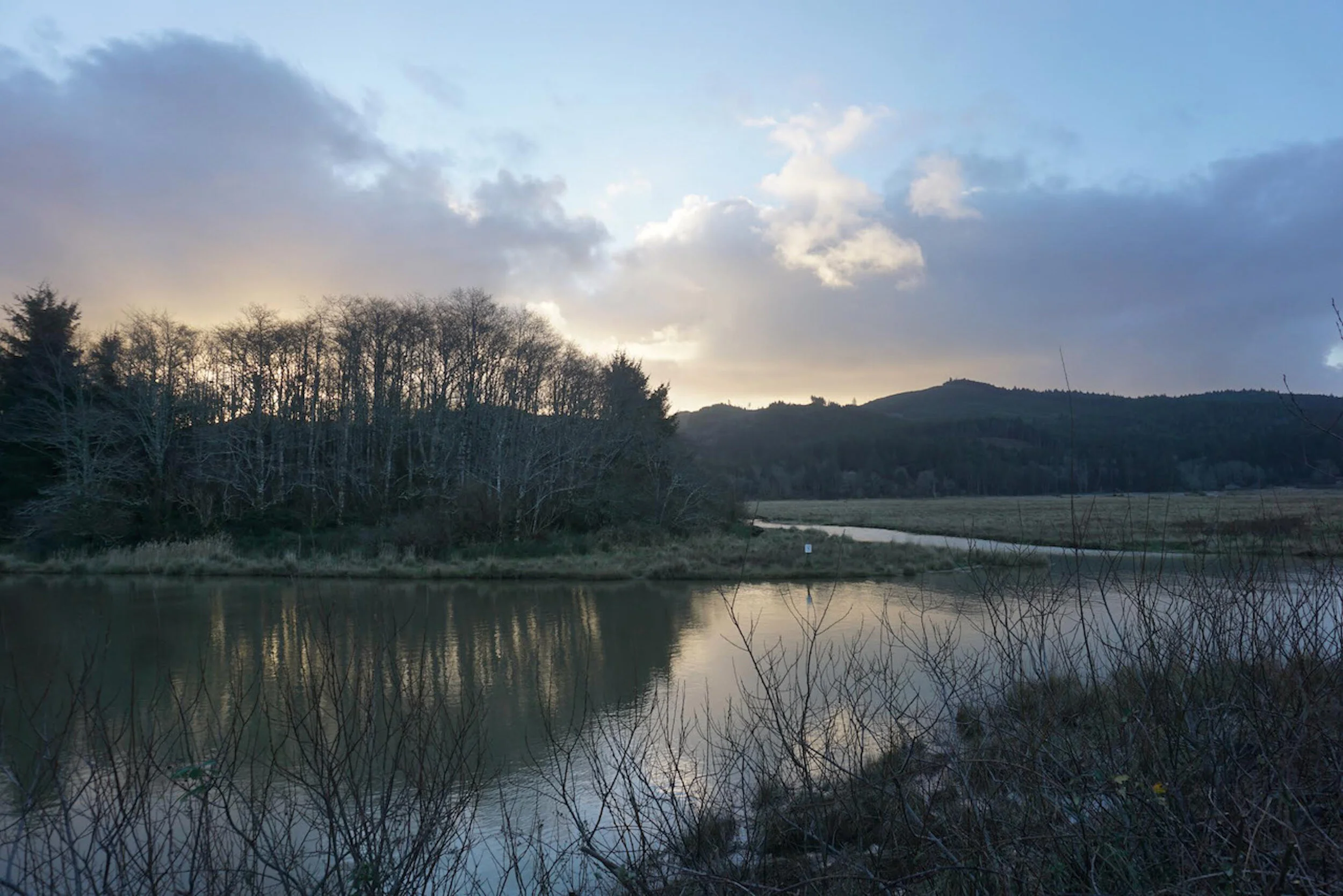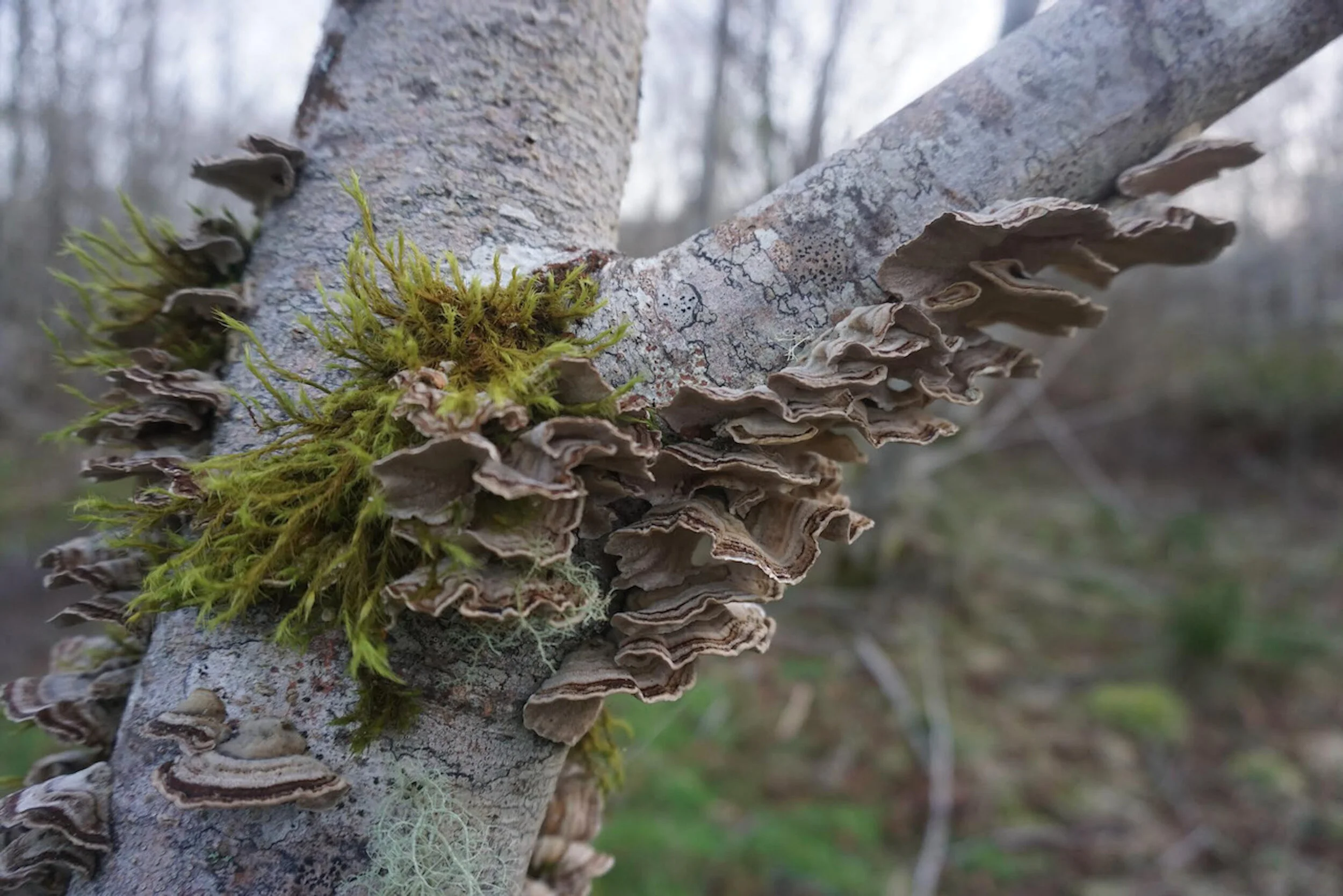Access all areas
Enjoy the trek without the slog on the coast’s accessible trails
By Gretchen Ammerman
Oregon Coast TODAY
It has been roughly a decade since my friend Dennis Gibson, a wheelchair user, gently pointed out that I was often forgetting to include accessibility information in my stories. Dennis passed away in 2017, but since the time he awakened me to my unintentional oversights, many gains have been made to increase access to the trails and beaches that make the Oregon Coast such a treasured place to live and visit.
You’ve likely heard of fat bikes, whose thick tires make beach riding a breeze. Similar technology is making it easier for everyone to enjoy the beach, with fat-tire wheelchairs. Two free programs currently exist, including one in Lincoln City.
“Our mission is to provide safe and accessible services, programs and facilities for all,” said Lincoln City Parks and Recreation Director Jeanne Sprague. “This beach wheelchair is needed for our community and we’re glad to assist in providing the service — we’re a beach town!”
Lincoln City’s ADA Coordinator Kevin Mattias helped organize the process of reserving the chair online, along with the necessary sanitation needed during the pandemic.
“Lincoln City wants to make sure anyone who wants to go on the beach has access to it,” Mattias said. “We want all to enjoy the sand and the surf.”
The Lincoln City beach wheelchair is stored in a locked blue storage container at the beach access on the west end of SW 51st Street, by the covered picnic shelter. The chair is available for check out at no charge, seven days a week, from 8 am to 4 pm. Rentals, available on a first-come, first-serve basis, are limited to one per day to allow for the sanitation of the chair after each use. In the event of extreme weather warnings, the wheelchair is not available to check out.
Rentals are facilitated with an app, which provides users with an access code to the locker. For more information, call 541-996-1224
The Manzanita Visitor Center has three beach wheelchairs — two adult and one child — available at no cost, seven days a week, from the Visitors Center at 31 Laneda Avenue in Manzanita. Call 503-812-5510 to make a reservation.
To supplement the beach wheelchair program, in June of 2008 Manzanita built the "Path to the Pacific” ramp to create an easy beach access for visitors, located where the main street of Manzanita meets the beach.
Meanwhile, back in Lincoln City, officials are working toward implementation of an ADA Transition Plan, which evaluates and plans for further accessibility in the city.
Recent projects include a new ADA-accessible playground at Regatta Park and an accessible trail at the new Nesika Park, laid with engineered wood chips. The swimming pool has a lift to help patrons enter and exit the water, and new ADA-accessible doors have been installed. Currently, the Spring Lake Open Space and the Head-to-Bay trail has some paved surfaces. There are also paved ramps with flat access at the NW 40th Street, NW 15th Street and SW 51st Street beach accesses.
Some other spots on the Central Coast that offer good surfaces and sweeping views include:
• Kilchis Point Reserve, located in Bay City on North Tillamook Bay, features a paved loop with abundant native plants and interpretive signage highlighting pioneer history, flora and fauna and Native American heritage. Numerous benches are also situated along the way.
• Yaquina Head Outstanding Natural Area in Newport, has paved paths with great views that circle the scenic Yaquina lighthouse. There’s also a wheelchair-accessible intertidal area at Quarry Cove. A good spot for watching seabirds, seals and whales.
• Cape Perpetua Scenic Area has a variety of paved paths that follow along the cape and a scenic stretch of oceanfront at Cook’s Chasm for views of Spouting Horn and Thor’s Well. A nearby paved overlook offers views of Devil’s Churn. The Visitor Center offers a good whale watching viewpoint.
A trip to Alder Island
By Michael Edwards
For the TODAY
Oregon’s Central Coast is blessed with a temperate climate and natural wonders, yet due to steep inclines, monstrous roots and six months of mud, many coastal hiking trails are inaccessible to people with limited mobility. Many paths can seem accessible when walked, but are difficult or even impossible to traverse in a wheelchair.
Last spring, I went to the Drift Creek Falls trail with my step-son Nehemiah, his wife Tiana and their friend Trish. Nehemiah gets around in a wheelchair and is always up for an adventure so, despite the trail’s hazards, we went anyway. Scrambling over roots and rolling through the muddy soup, we made it to the bridge and then back to the car, taking a Sasquach-sized beating in the process. Back at the parking lot, both we and the wheelchair were caked in mud and, as we picked sticks and spruce needles off of one another, we laughed hysterically at our underestimation of the trail’s difficulty
In the following week, “Never again!” and “Man, that was fun.” were the popular phrases around the house.
Seeking a less treacherous trail than Drift Creek Falls, over the Christmas holiday our family walked the mostly paved path around the Hatfield Marine Science Center in Newport. The trail is a wonderful place to spy on waterfowl, colorful fishing boats, the NOAA science fleet and the Depression-era, government-green Yaquina Bay Bridge. The science center trail is accessible, but even there, sections of the blacktop have crumbled and been infiltrated by sand.
As he plowed through the sandy parts of the trail, Nehemiah let us know what he thought of the sand.
“More than any other surface, sand is the one that is the toughest to get through.” he said. “You know those cheap plastic wheels that always look like they are going to break off on the front of the shopping cart? Try to push that cart, full of groceries, through the sand. That’s what pushing this wheelchair through sand is like. Clean up in produce.”
Our next excursion, we decided, would be on a hard-packed trail surface void of sand, mud or small bodies of water.
On the south bank of the swollen Siletz River, on the east side of Highway 101, is the half-mile Alder Island Loop trail. Even with all of the winter rain, the wide path is still hard-packed with dirt and gravel. There are a couple of inclines along the trail where Tiana gave a push but, other than those few areas, Nehemiah was able to explore the island independently. Nehemiah is a budding mycologist and even on the cold January day when we visited, he identified several mushroom species on the island.
Along with being accessible, the Alder Island trail is short enough for young children to enjoy. One of the features that curious children and their parents might appreciate are colorful and informative placards that line the trail. Each placard gives a well-written summary and an impressive illustration of an island animal or native plant. Who knew that the eelgrass beds of the Siletz River provide the sheltered estuary home for young Dungeness crabs?
If the half-mile hike leaves you wanting more, walk multiple laps — you are almost guaranteed to see and hear something different on each go around.
On your first trip, you might notice a snowy egret plying the briny slough for frogs and newts. On your second, perhaps you’ll catch a glimpse of a tiny kinglet flitting around in the sword ferns and above in a grove of red alders you might pick out the conspicuous rectangular excavation of a pileated woodpecker. Your movements might cause a flock of boisterous chickadees to explode from a mature spruce. Patient spring visitors might witness a kingfisher perched on a snag scanning the river for minnows, and in the spring, the synchronized ballet of courting Western grebes.
In this winter season when log-throwing sneaker waves turn beaches treacherous, atmospheric rivers soak the land, the day comes late and the night arrives far too early, and the siren song of the desert is steadily amplified, find a two-hour window to get outdoors and replenish those depleted Vitamin D stores. Keep an eye on the forecast and when sun breaks are predicted take your quarantine-crazy family to explore the biologically dense and accessible Alder Island Trail.





